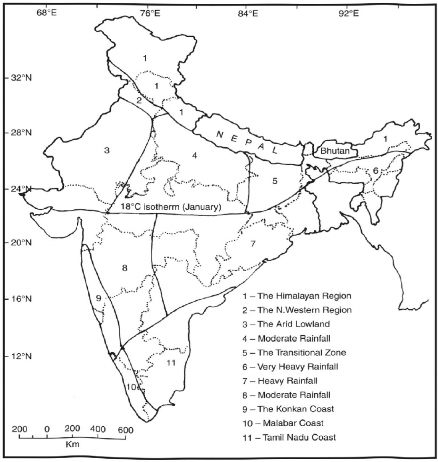CLIMATIC DIVISIONS BY STAMP AND KENDREW
Professor L.D. Stamp and W.G. Kendrew divided India into several climatic divisions. This classification is arbitrary and subjective. Stamp used 18°C isotherm of mean temperature for January to divide the country into two broad climatic regions, namely:
A. the subtropical or continental zone lying to the north of this isotherm, and
B. the tropical zone lying to the south of this isotherm (Fig. 4.23). It may be seen from Fig. 4.23 that the isotherm of 18°C runs roughly parallel to the Tropic of Cancer.

Fig. 4.23 Climatic Divisions (Stamp)
The two major climatic divisions, on the basis of rainfall, have been further divided into eleven regions;
A. The Subtropical or Continental climate has been divided into the following five divisions: 1. The Himalayan Region 2. The North-Western Region
3. The arid lowland (dry plains) 4. The region of moderate rainfall
5. The transitional zone
B. Tropical India has been divided into the following six regions:
6. Region of very heavy rainfall 7. Region of heavy rainfall
8. Region of moderate rainfall 9. The Konkan Coast
10. The Malabar Coast 11. The Tamil Nadu region
